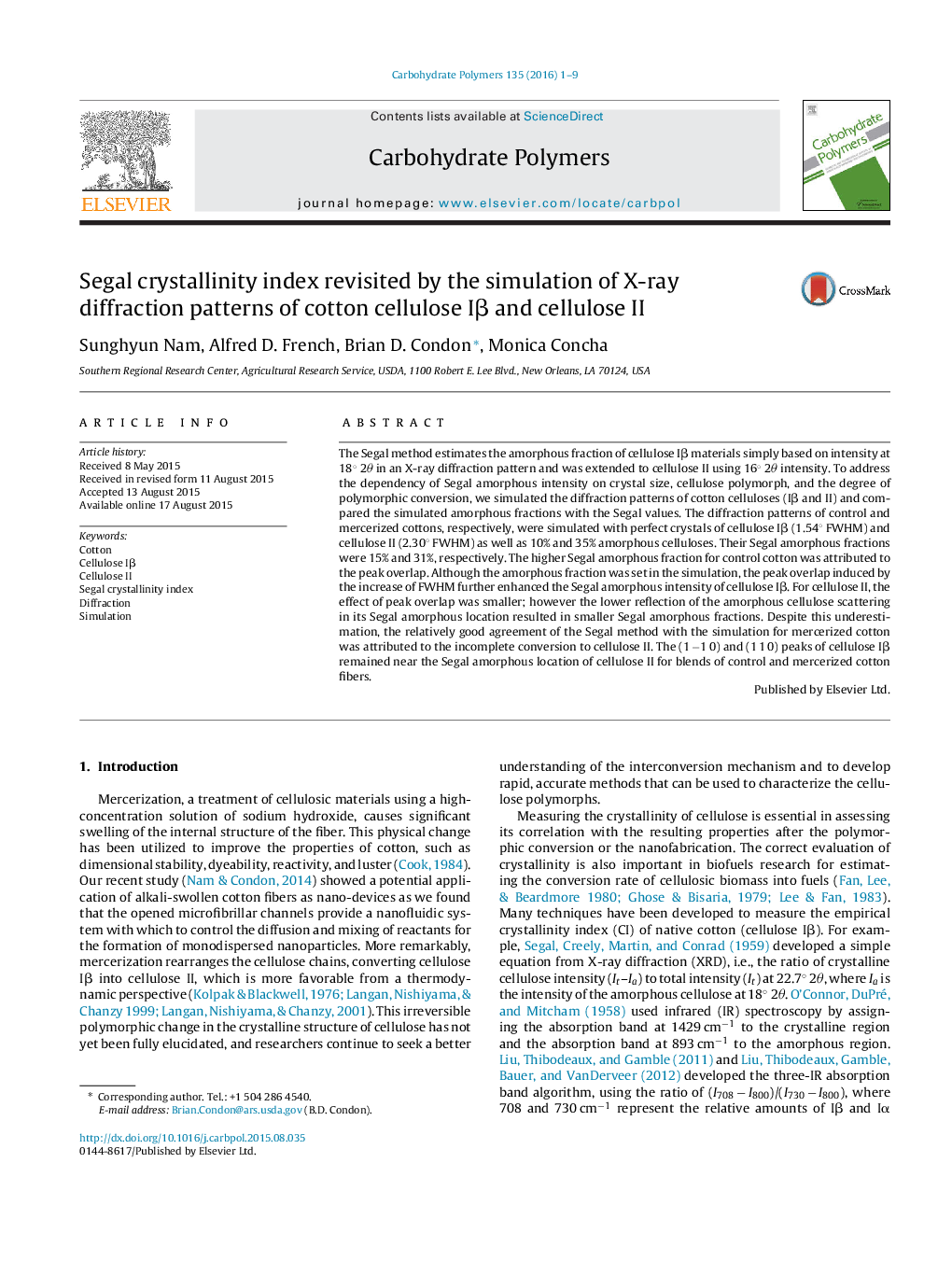| Article ID | Journal | Published Year | Pages | File Type |
|---|---|---|---|---|
| 1383537 | Carbohydrate Polymers | 2016 | 9 Pages |
•The X-ray diffraction patterns of control and mercerized cotton fibers were simulated with perfect cellulose Iβ and II crystals, respectively, as well as amorphous cellulose.•The simulated crystalline fraction was larger for control cotton but smaller for mercerized cotton as compared with their respective Segal CI value. This discrepancy was explained by the dependence of the Segal amorphous intensity on crystal size, cellulose polymorph, and the degree of polymorphic conversion.
The Segal method estimates the amorphous fraction of cellulose Iβ materials simply based on intensity at 18° 2θ in an X-ray diffraction pattern and was extended to cellulose II using 16° 2θ intensity. To address the dependency of Segal amorphous intensity on crystal size, cellulose polymorph, and the degree of polymorphic conversion, we simulated the diffraction patterns of cotton celluloses (Iβ and II) and compared the simulated amorphous fractions with the Segal values. The diffraction patterns of control and mercerized cottons, respectively, were simulated with perfect crystals of cellulose Iβ (1.54° FWHM) and cellulose II (2.30° FWHM) as well as 10% and 35% amorphous celluloses. Their Segal amorphous fractions were 15% and 31%, respectively. The higher Segal amorphous fraction for control cotton was attributed to the peak overlap. Although the amorphous fraction was set in the simulation, the peak overlap induced by the increase of FWHM further enhanced the Segal amorphous intensity of cellulose Iβ. For cellulose II, the effect of peak overlap was smaller; however the lower reflection of the amorphous cellulose scattering in its Segal amorphous location resulted in smaller Segal amorphous fractions. Despite this underestimation, the relatively good agreement of the Segal method with the simulation for mercerized cotton was attributed to the incomplete conversion to cellulose II. The (1 −1 0) and (1 1 0) peaks of cellulose Iβ remained near the Segal amorphous location of cellulose II for blends of control and mercerized cotton fibers.
